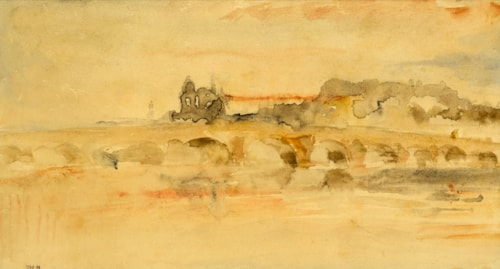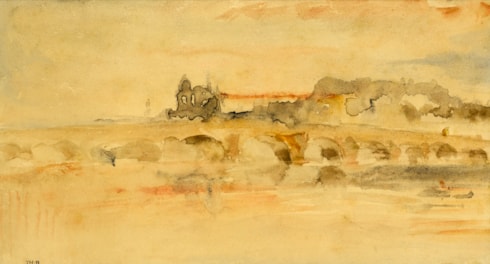
Théodore ROUSSEAU
Paris 1812 - Barbizon 1867
Biography
Théodore Rousseau received his artistic training in the studio of the landscape painter Jean-Charles-Joseph Rémond, although he also spent time copying paintings by 17th century Dutch masters in the Louvre. Following his Salon debut in 1831, Rousseau travelled throughout Normandy, working alongside Paul Huet, who was to become a particular inspiration to him. In the late 1820’s, he made the first of many visits to the forest of Fontainebleau near Paris, an area of woodland which at the time remained wild and largely unspoiled. His first moderate success came at the Salon of 1833, when one of his paintings was purchased by the Duc d’Orléans, and again two years later, when a pair of sketches were acquired by the Prince de Joinville. In the late 1830’s and 1840’s Rousseau began working regularly in the village of Barbizon, at the edge of the forest of Fontainebleau, and eventually established a permanent studio there in 1847.
Although these were some of the most productive and rewarding years of his career, it was also at this time that he began to come into conflict with the conservative artists of the Académie who dominated the selection process for the annual Paris Salon. Between 1836 and 1841, every work submitted by Rousseau to the Salons was rejected, while from 1842 to 1849 he simply chose not to present any work to the Salon juries at all. As a result he became known by the unfortunate sobriquet ‘le grand refusé’, and it was not until 1849 that he again participated in the Salon. At the Exposition Universelle of 1855, an entire room was devoted to Rousseau’s work. Yet despite this measure of public success, the artist continued to find it difficult to sell his works, or to obtain any official recognition or honours. Indeed, he only began to enjoy some financial security in 1866, a year before his death, when seventy of his works were purchased by two dealers. Even after at his death in 1867, no memorial exhibition of his work was held, despite this being the usual practice at the time.
As a landscape draughtsman, Rousseau made use of a special folding easel with which he would travel, so that he would be able to draw or sketch any view or motif that caught his attention. Yet only a relatively small number of the approximately 750 surviving drawings by Rousseau were made as preparatory studies for paintings. Most were instead done as studies in their own right, the product of the artist’s fertile skill as a draughtsman, and were intended for sale to collectors.


